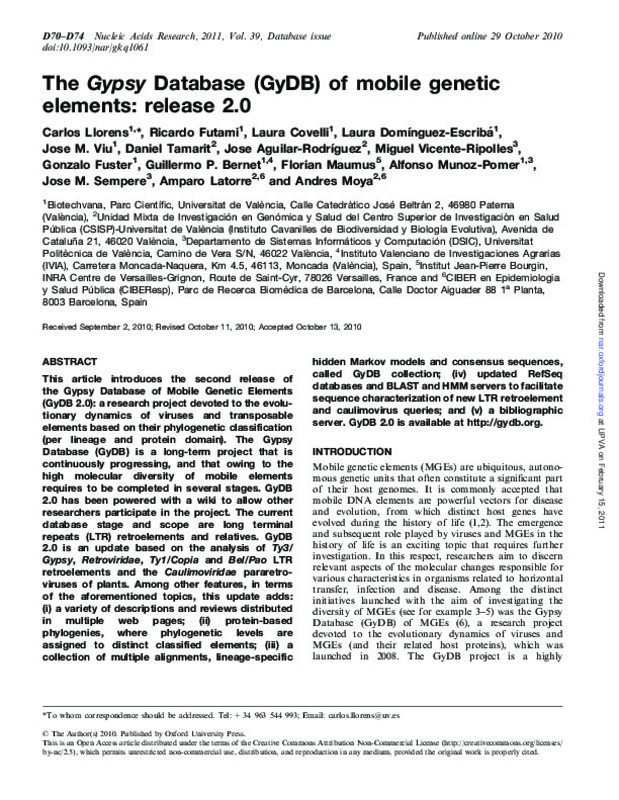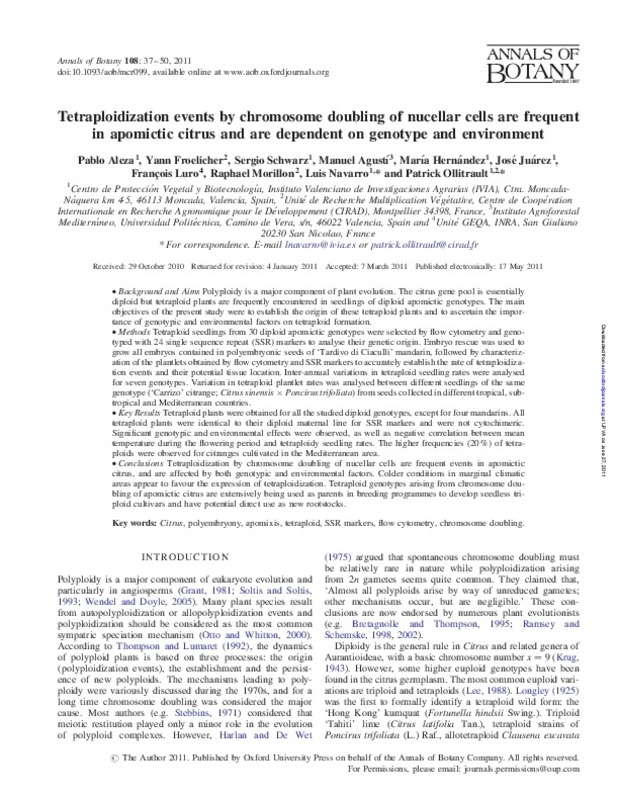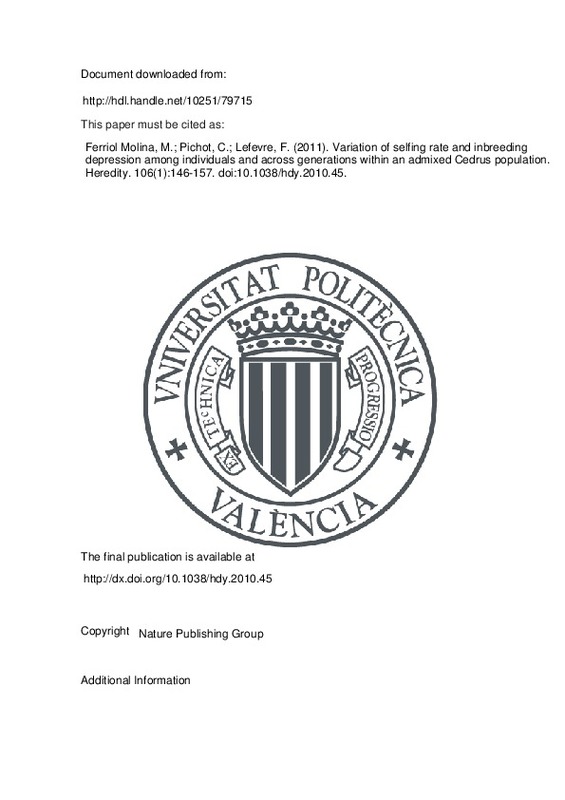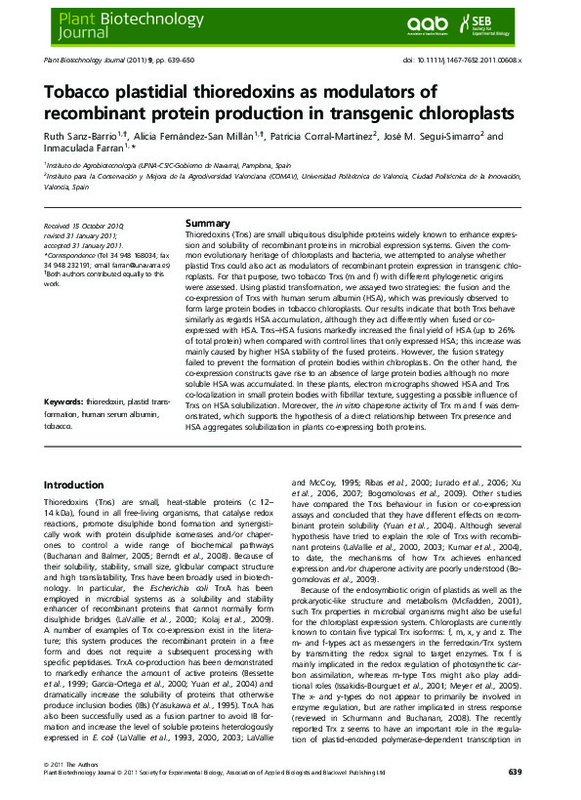JavaScript is disabled for your browser. Some features of this site may not work without it.
Buscar en RiuNet
Listar
Mi cuenta
Estadísticas
Ayuda RiuNet
Admin. UPV
The Gypsy Database (GyDB) of mobile genetic elements: release 2.0
Mostrar el registro sencillo del ítem
Ficheros en el ítem
| dc.contributor.author | Llorens, Carlos
|
es_ES |
| dc.contributor.author | Futami, Ricardo
|
es_ES |
| dc.contributor.author | Covelli, Laura
|
es_ES |
| dc.contributor.author | Domínguez-Escriba, Laura
|
es_ES |
| dc.contributor.author | Viu, Jose M.
|
es_ES |
| dc.contributor.author | Tamarit, Daniel
|
es_ES |
| dc.contributor.author | Aguilar-Rodríguez, Jose
|
es_ES |
| dc.contributor.author | Vicente Ripollés, Miguel
|
es_ES |
| dc.contributor.author | Fuster, Gonzalo
|
es_ES |
| dc.contributor.author | Bernet, Guillermo P
|
es_ES |
| dc.contributor.author | Maumus, Florian
|
es_ES |
| dc.contributor.author | Munoz-Pomer, Alfonso
|
es_ES |
| dc.contributor.author | Sempere Luna, José María
|
es_ES |
| dc.contributor.author | Latorre, Amparo
|
es_ES |
| dc.contributor.author | Moya, Andres
|
es_ES |
| dc.date.accessioned | 2013-04-29T10:18:06Z | |
| dc.date.available | 2013-04-29T10:18:06Z | |
| dc.date.issued | 2011 | |
| dc.identifier.issn | 0305-1048 | |
| dc.identifier.uri | http://hdl.handle.net/10251/28298 | |
| dc.description.abstract | This article introduces the second release of the Gypsy Database of Mobile Genetic Elements (GyDB 2.0): a research project devoted to the evolutionary dynamics of viruses and transposable elements based on their phylogenetic classification (per lineage and protein domain). The Gypsy Database (GyDB) is a long-term project that is continuously progressing, and that owing to the high molecular diversity of mobile elements requires to be completed in several stages. GyDB 2.0 has been powered with a wiki to allow other researchers participate in the project. The current database stage and scope are long terminal repeats (LTR) retroelements and relatives. GyDB 2.0 is an update based on the analysis of Ty3/Gypsy, Retroviridae, Ty1/Copia and Bel/Pao LTR retroelements and the Caulimoviridae pararetroviruses of plants. Among other features, in terms of the aforementioned topics, this update adds: (i) a variety of descriptions and reviews distributed in multiple web pages; (ii) protein-based phylogenies, where phylogenetic levels are assigned to distinct classified elements; (iii) a collection of multiple alignments, lineage-specific hidden Markov models and consensus sequences, called GyDB collection; (iv) updated RefSeq databases and BLAST and HMM servers to facilitate sequence characterization of new LTR retroelement and caulimovirus queries; and (v) a bibliographic server. GyDB 2.0 is available at http://gydb.org. © The Author(s) 2010. Published by Oxford University Press. | es_ES |
| dc.description.sponsorship | Centro de Desarrollo Tecnologico Industrial (CDTI) (grant IDI-20100007, partial); Empresa Nacional de Innovacion, S.A (ENISA) (17092008, partial); IMPIVA (IMIDTA/2009/118 and IMDTA/2010/740, partial); European Regional Development Fund (ERDF); Ministerio de Ciencia e Innovacion (MICINN) (Torres-Quevedo grants PTQ-09-01-00020, PTQ-09-01-00670 and PTQ-10-03552, partial). Funding for open access charge: University of Valencia. | en_EN |
| dc.language | Inglés | es_ES |
| dc.publisher | Oxford University Press (OUP): Policy C - Option B | es_ES |
| dc.relation.ispartof | Nucleic Acids Research | es_ES |
| dc.rights | Reconocimiento - No comercial (by-nc) | es_ES |
| dc.subject | Virus protein | es_ES |
| dc.subject | Article | es_ES |
| dc.subject | Caulimoviridae | es_ES |
| dc.subject | Chemistry | es_ES |
| dc.subject | Classification | es_ES |
| dc.subject | Computer program | es_ES |
| dc.subject | Genetic database | es_ES |
| dc.subject | Genetics | es_ES |
| dc.subject | Long terminal repeat | es_ES |
| dc.subject | Phylogeny | es_ES |
| dc.subject | Retroposon | es_ES |
| dc.subject | Retrovirus | es_ES |
| dc.subject | Access to information | es_ES |
| dc.subject | Cauliflower mosaic virus | es_ES |
| dc.subject | Data analysis software | es_ES |
| dc.subject | DNA structure | es_ES |
| dc.subject | Eukaryote evolution | es_ES |
| dc.subject | Genetic line | es_ES |
| dc.subject | Genetic variability | es_ES |
| dc.subject | Hidden Markov model | es_ES |
| dc.subject | Mobile genetic element | es_ES |
| dc.subject | Nonhuman | es_ES |
| dc.subject | Phylogenetic tree | es_ES |
| dc.subject | Priority journal | es_ES |
| dc.subject | Protein domain | es_ES |
| dc.subject | Sequence analysis | es_ES |
| dc.subject | Transposon | es_ES |
| dc.subject | Databases, Genetic | es_ES |
| dc.subject | Retroelements | es_ES |
| dc.subject | Retroviridae | es_ES |
| dc.subject | Retroviridae Proteins | es_ES |
| dc.subject | Software | es_ES |
| dc.subject | Terminal Repeat Sequences | es_ES |
| dc.subject.classification | LENGUAJES Y SISTEMAS INFORMATICOS | es_ES |
| dc.title | The Gypsy Database (GyDB) of mobile genetic elements: release 2.0 | es_ES |
| dc.type | Artículo | es_ES |
| dc.identifier.doi | 10.1093/nar/gkq1061 | |
| dc.relation.projectID | info:eu-repo/grantAgreement/MICINN//IDI-20100007/ES/PROYECTO GYPSY DATABASE: LA BASE DE DATOS COLABORATIVA DE ELEMENTOS GENÉTICOS MÓVILES/ | es_ES |
| dc.relation.projectID | info:eu-repo/grantAgreement/ENISA//17092008/ | es_ES |
| dc.relation.projectID | info:eu-repo/grantAgreement/Generalitat Valenciana//IMIDTA%2F2009%2F118/ES/Gypsy Database Project And Biotechvana Bioinformatics Ii/ / | es_ES |
| dc.relation.projectID | info:eu-repo/grantAgreement/MICINN//PTQ-09-01-00020/ES/PTQ-09-01-00020/ / | es_ES |
| dc.relation.projectID | info:eu-repo/grantAgreement/MICINN//PTQ-09-01-00670/ES/PTQ-09-01-00670/ | es_ES |
| dc.relation.projectID | info:eu-repo/grantAgreement/Generalitat Valenciana//IMDTA%2F2010%2F740/ | es_ES |
| dc.relation.projectID | info:eu-repo/grantAgreement/MICINN//PTQ-10-03552/ES/PTQ-10-03552/ | es_ES |
| dc.rights.accessRights | Abierto | es_ES |
| dc.contributor.affiliation | Universitat Politècnica de València. Departamento de Sistemas Informáticos y Computación - Departament de Sistemes Informàtics i Computació | es_ES |
| dc.description.bibliographicCitation | Llorens, C.; Futami, R.; Covelli, L.; Domínguez-Escriba, L.; Viu, JM.; Tamarit, D.; Aguilar-Rodríguez, J.... (2011). The Gypsy Database (GyDB) of mobile genetic elements: release 2.0. Nucleic Acids Research. 39:70-74. https://doi.org/10.1093/nar/gkq1061 | es_ES |
| dc.description.accrualMethod | S | es_ES |
| dc.relation.publisherversion | http://nar.oxfordjournals.org/content/39/suppl_1/D70.abstract | es_ES |
| dc.description.upvformatpinicio | 70 | es_ES |
| dc.description.upvformatpfin | 74 | es_ES |
| dc.type.version | info:eu-repo/semantics/publishedVersion | es_ES |
| dc.description.volume | 39 | es_ES |
| dc.relation.senia | 210862 | |
| dc.identifier.pmid | 21036865 | en_EN |
| dc.identifier.pmcid | PMC3013669 | en_EN |
| dc.contributor.funder | Ministerio de Ciencia e Innovación | es_ES |
| dc.contributor.funder | Empresa Nacional de Innovacion, S.A. | es_ES |
| dc.contributor.funder | Universitat de València | |
| dc.description.references | Hurst, G. D. D., & Schilthuizen, M. (1998). Selfish genetic elements and speciation. Heredity, 80(1), 2-8. doi:10.1046/j.1365-2540.1998.00337.x | es_ES |
| dc.description.references | Volff, J.-N., & Brosius, J. (2007). Modern Genomes with Retro-Look: Retrotransposed Elements, Retroposition and the Origin of New Genes. Gene and Protein Evolution, 175-190. doi:10.1159/000107611 | es_ES |
| dc.description.references | Jurka, J., Kapitonov, V. V., Pavlicek, A., Klonowski, P., Kohany, O., & Walichiewicz, J. (2005). Repbase Update, a database of eukaryotic repetitive elements. Cytogenetic and Genome Research, 110(1-4), 462-467. doi:10.1159/000084979 | es_ES |
| dc.description.references | Leplae, R. (2004). ACLAME: A CLAssification of Mobile genetic Elements. Nucleic Acids Research, 32(90001), 45D-49. doi:10.1093/nar/gkh084 | es_ES |
| dc.description.references | Gründemann, J., Schlaudraff, F., Haeckel, O., & Liss, B. (2008). Elevated α-synuclein mRNA levels in individual UV-laser-microdissected dopaminergic substantia nigra neurons in idiopathic Parkinson’s disease. Nucleic Acids Research, 36(7), e38. doi:10.1093/nar/gkn084 | es_ES |
| dc.description.references | Llorens, C., Muñoz-Pomer, A., Bernad, L., Botella, H., & Moya, A. (2009). Network dynamics of eukaryotic LTR retroelements beyond phylogenetic trees. Biology Direct, 4(1), 41. doi:10.1186/1745-6150-4-41 | es_ES |
| dc.description.references | Benson, D. A., Karsch-Mizrachi, I., Lipman, D. J., Ostell, J., & Sayers, E. W. (2009). GenBank. Nucleic Acids Research, 37(Database), D26-D31. doi:10.1093/nar/gkn723 | es_ES |
| dc.description.references | Llorens, C., Fares, M. A., & Moya, A. (2008). Relationships of Gag-pol Diversity between Ty3/Gypsy and Retroviridae LTR retroelements and the three kings hypothesis. BMC Evolutionary Biology, 8(1), 276. doi:10.1186/1471-2148-8-276 | es_ES |
| dc.description.references | Eddy, S. R. (1998). Profile hidden Markov models. Bioinformatics, 14(9), 755-763. doi:10.1093/bioinformatics/14.9.755 | es_ES |
| dc.description.references | Koonin, E. V., Zhou, S., & Lucchesi, J. C. (1995). The chromo superfamily: new members, duplication of the chromo domain and possible role in delivering transcription regulators to chromatin. Nucleic Acids Research, 23(21), 4229-4233. doi:10.1093/nar/23.21.4229 | es_ES |
| dc.description.references | Rawlings, N. D., Barrett, A. J., & Bateman, A. (2009). MEROPS: the peptidase database. Nucleic Acids Research, 38(suppl_1), D227-D233. doi:10.1093/nar/gkp971 | es_ES |
| dc.description.references | Llorens, C., Futami, R., Renaud, G., & Moya, A. (2009). Bioinformatic flowchart and database to investigate the origins and diversity of Clan AA peptidases. Biology Direct, 4(1), 3. doi:10.1186/1745-6150-4-3 | es_ES |
| dc.description.references | Altschul, S. (1997). Gapped BLAST and PSI-BLAST: a new generation of protein database search programs. Nucleic Acids Research, 25(17), 3389-3402. doi:10.1093/nar/25.17.3389 | es_ES |
| dc.description.references | Novikova, O., Mayorov, V., Smyshlyaev, G., Fursov, M., Adkison, L., Pisarenko, O., & Blinov, A. (2008). Novel clades of chromodomain-containing Gypsy LTR retrotransposons from mosses (Bryophyta). The Plant Journal, 56(4), 562-574. doi:10.1111/j.1365-313x.2008.03621.x | es_ES |
| dc.description.references | Bae, Y.-A., Ahn, J.-S., Kim, S.-H., Rhyu, M.-G., Kong, Y., & Cho, S.-Y. (2008). PwRn1, a novel Ty3/gypsy-like retrotransposon of Paragonimus westermani: molecular characters and its differentially preserved mobile potential according to host chromosomal polyploidy. BMC Genomics, 9(1), 482. doi:10.1186/1471-2164-9-482 | es_ES |
| dc.description.references | Gao, D., Gill, N., Kim, H.-R., Walling, J. G., Zhang, W., Fan, C., … Jackson, S. A. (2009). A lineage-specific centromere retrotransposon in Oryza brachyantha. The Plant Journal, 60(5), 820-831. doi:10.1111/j.1365-313x.2009.04005.x | es_ES |
| dc.description.references | Gottlieb, A. M., & Poggio, L. (2010). Genomic screening in dioecious «yerba mate» tree (Ilex paraguariensis A. St. Hill., Aquifoliaceae) through representational difference analysis. Genetica, 138(6), 567-578. doi:10.1007/s10709-010-9449-9 | es_ES |
| dc.description.references | Maumus, F., Allen, A. E., Mhiri, C., Hu, H., Jabbari, K., Vardi, A., … Bowler, C. (2009). Potential impact of stress activated retrotransposons on genome evolution in a marine diatom. BMC Genomics, 10(1), 624. doi:10.1186/1471-2164-10-624 | es_ES |
| dc.description.references | (2010). Genome Sequence of the Pea Aphid Acyrthosiphon pisum. PLoS Biology, 8(2), e1000313. doi:10.1371/journal.pbio.1000313 | es_ES |
| dc.description.references | Lerat, E., Brunet, F., Bazin, C., & Capy, P. (1999). Genetica, 107(1/3), 15-25. doi:10.1023/a:1004026821539 | es_ES |
| dc.description.references | T., G., & R., P. (2002). A group of deuterostome Ty3/ gypsy -like retrotransposons with Ty1/ copia -like pol -domain orders. Molecular Genetics and Genomics, 267(4), 481-491. doi:10.1007/s00438-002-0679-0 | es_ES |
| dc.description.references | Malik, H. S. (2001). Phylogenetic Analysis of Ribonuclease H Domains Suggests a Late, Chimeric Origin of LTR Retrotransposable Elements and Retroviruses. Genome Research, 11(7), 1187-1197. doi:10.1101/gr.185101 | es_ES |
| dc.description.references | Marco, A., & Marín, I. (2008). How Athila retrotransposons survive in the Arabidopsis genome. BMC Genomics, 9(1), 219. doi:10.1186/1471-2164-9-219 | es_ES |
| dc.description.references | Rambaut, A., Posada, D., Crandall, K. A., & Holmes, E. C. (2004). The causes and consequences of HIV evolution. Nature Reviews Genetics, 5(1), 52-61. doi:10.1038/nrg1246 | es_ES |
| dc.description.references | Flavell, A. J. (1999). Long terminal repeat retrotransposons jump between species. Proceedings of the National Academy of Sciences, 96(22), 12211-12212. doi:10.1073/pnas.96.22.12211 | es_ES |
| dc.description.references | Jordan, I. K., Matyunina, L. V., & McDonald, J. F. (1999). Evidence for the recent horizontal transfer of long terminal repeat retrotransposon. Proceedings of the National Academy of Sciences, 96(22), 12621-12625. doi:10.1073/pnas.96.22.12621 | es_ES |
| dc.description.references | Bousalem, M., Douzery, E. J. P., & Seal, S. E. (2008). Taxonomy, molecular phylogeny and evolution of plant reverse transcribing viruses (family Caulimoviridae) inferred from full-length genome and reverse transcriptase sequences. Archives of Virology, 153(6), 1085-1102. doi:10.1007/s00705-008-0095-9 | es_ES |
| dc.description.references | Koonin, E. V., Mushegian, A. R., Ryabov, E. V., & Dolja, V. V. (1991). Diverse Groups of Plant RNA and DNA Viruses Share Related Movement Proteins that may Possess Chaperone-like Activity. Journal of General Virology, 72(12), 2895-2903. doi:10.1099/0022-1317-72-12-2895 | es_ES |
| dc.description.references | Llorens, J. V., Clark, J. B., Martínez-Garay, I., Soriano, S., de Frutos, R., & Martínez-Sebastián, M. J. (2008). Gypsy endogenous retrovirus maintains potential infectivity in several species of Drosophilids. BMC Evolutionary Biology, 8(1), 302. doi:10.1186/1471-2148-8-302 | es_ES |
| dc.description.references | De Setta, N., Van Sluys, M.-A., Capy, P., & Carareto, C. M. (2009). Multiple invasions of Gypsy and Micropia retroelements in genus Zaprionus and melanogaster subgroup of the genus Drosophila. BMC Evolutionary Biology, 9(1), 279. doi:10.1186/1471-2148-9-279 | es_ES |











